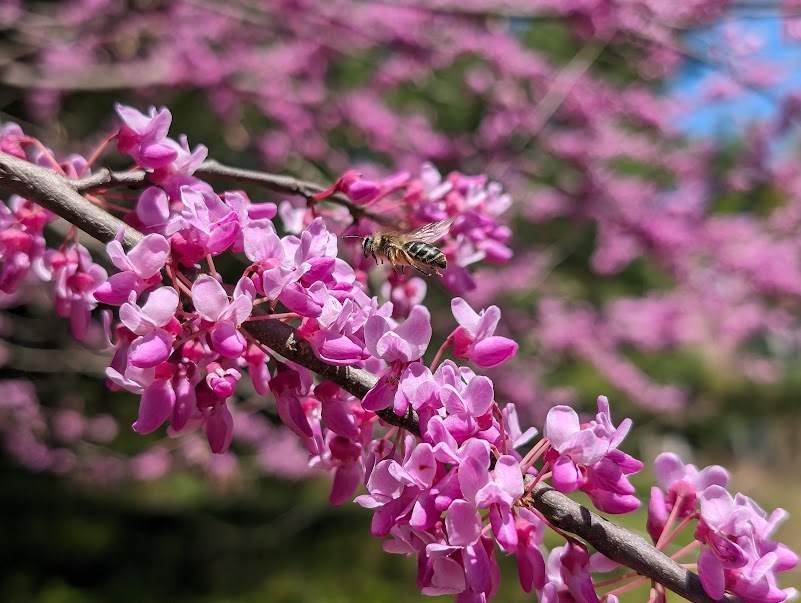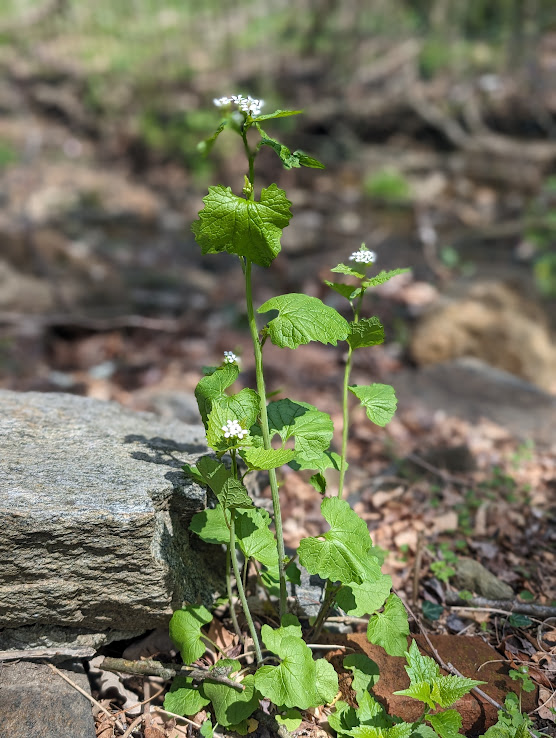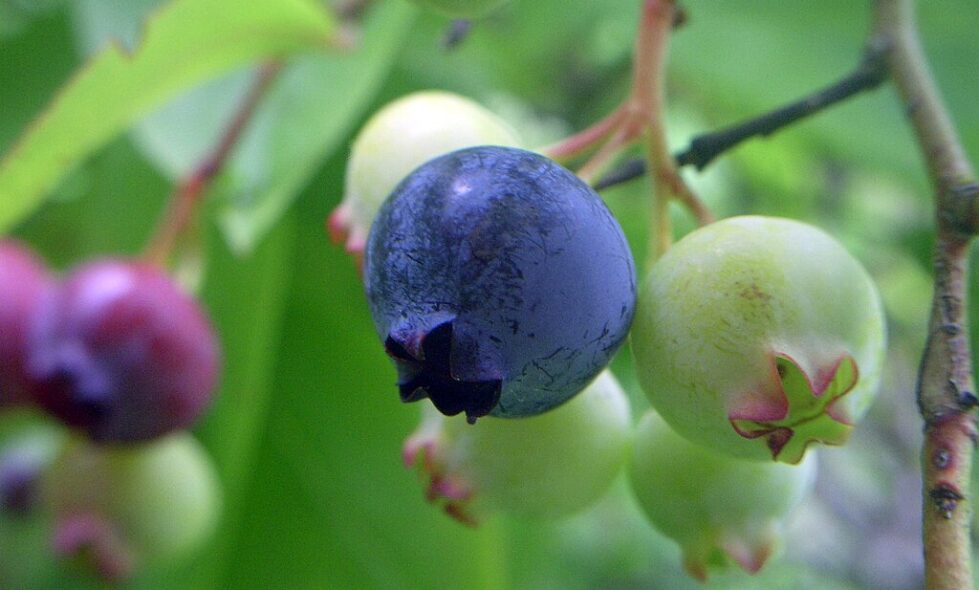You probably know that local produce is fresher and tastier, better for the local economy, and uses less resources in transportation than produce from farther away. But did you know it can be easy to grow your own? To add edible plants to your yard, read on. Some of the ways may surprise you!
Add Edible Plants With Trees
One way to add edible plants is to plant native, ornamental trees such as Serviceberries (Amelanchier sp.) and Pawpaws (Asimina triloba). They are both mid-sized and fit well into residential settings. With these trees, you also get fruit, and provide habitat for pollinators. They are happy in full sun to part shade and average to moist soil conditions.
White flowers cover Serviceberries in early spring which then produce red to blue fruit in June. The berries taste similar to blueberries and are delicious if you beat the birds to them. Serviceberries have lovely fall color in a variety of shades from yellows, to oranges, to reds.

Pawpaws appear tropical with their large, drooping leaves and insignificant but curious, brown flowers. These are followed by greenish-yellow, oblong fruits that taste similar to bananas. Fox, raccoon, and opossum eat the fruit if it is not harvested first. Pawpaws have a clear, yellow fall color.


Add Edible Plants With Berries
Berries are another way to add edible plants. Strawberries, blueberries, raspberries, and blackberries need no introduction as fruit, but consider them as landscape plants.
Use strawberries as a groundcover in sunny locations. Ever-bearing varieties in your perennial beds provide white flowers and attractive red fruit for much of the growing season. They make a great groundcover because strawberries grow thick enough to out-compete most weeds. Choose disease resistant varieties for best results.
Blueberry bushes are beautiful even without the fruit. Numerous cultivars come in a variety of sizes from 2’ tall to 8’ tall. Blueberries produce white flowers in spring, berries in summer, and have terrific red fall color. Happy plants require acidic soil and full sun. So if you have this type of spot, add blueberries to your landscape for food and beauty.
What raspberries and blackberries lack in ornamental appeal, they make up for in taste and ease of cultivation. Plant these brambles on a property edge, and reap the rewards of berries for years to come.



Add Ornamental Vegetables
Many vegetables, such as chard, peppers, and string beans are attractive enough to tuck into existing beds. Use your imagination, and squeeze vegetables in your perennial garden or pots to add edible plants in unexpected places.

Add Edible Flowers
In addition to adding vegetables, use flowers to toss into salads! Plant nasturtiums, violets, and calendula for color in your garden and on your plate. Even the flowers of redbud trees (Cercis canadensis) are edible and colorful.


Herbs
Of course we cannot forget culinary herbs! If possible, group them together right outside your kitchen door. Grab a handful of rosemary or thyme as you are cooking and toss it into almost any dish.
Another reason to group these plants is that many herbs come from the Mediterranean region, and therefore have similar cultural requirements. As in the Mediterranean, infertile, well-drained soil and full sun keep most herbs happy. Group herbs together, do not fertilize, go light on water and enjoy these edibles throughout the year.
Edible Weeds
You may not have invited garlic mustard, dandelion, purslane, and many other weeds to your garden. Nevertheless, include them in your list of edible plants. Many were brought to this continent for culinary purposes and are quite tasty. Unfortunately, they escaped cultivation and are now weedy pests. So if you are going to pull them anyway, you might as well eat them! Go to http://www.eattheweeds.com for more information.

To join a growing trend in gardening, incorporate edible plants in your landscape. By doing this, you will improve the health of your family and the environment while saving on your grocery bill! And if you need help, check out our services for more more information.
As always, beware of food allergies, make sure you have correctly identified any plant, and minimize pesticide use on any edible plant before consuming.

